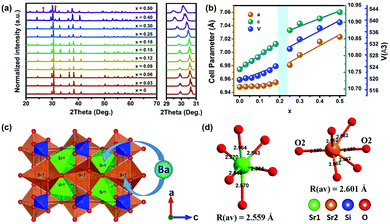https://www.science.org/doi/10.1126/sciadv.aav0363?intcmp=trendmd-adv&

Solid-state phosphor-converted white light-emitting diodes (pc-WLEDs) are currently revolutionizing the lighting industry. To advance the technology, phosphors with high efficiency, tunable photoluminescence, and high thermal stability are required. Here, we demonstrate that a simple lithium incorporation in NaAlSiO4:Eu system enables the simultaneous fulfillment of the three criteria. The Li substitution at Al sites beside Na sites in NaAlSiO4:Eu leads to an enhanced emission intensity/efficiency owing to an effective Eu3+ to Eu2+ reduction, an emission color tuning from yellow to green by tuning the occupation of different Eu sites, and an improvement of luminescence thermal stability as a result of the interplay with Li-related defects. A pc-WLED using the Li-codoped NaAlSiO4:Eu as a green component exhibits improved performance. The phosphors with multiple activator sites can facilitate the positive synergistic effect on luminescence properties.


 \
\





